INJECTABLE CELLULITE TREATMENTS
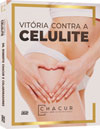
Content extracted from the book “Victory Against Cellulite” by Dr Roberto Chacur, Ed. AGE, 2023.
Dr. Cibele Tamietti Durães
In the treatment of cellulite, we associate different techniques, including mesotherapy, in order to obtain better clinical outcomes. Mesotherapy consists of injections of different active ingredients directly into the area we want to treat. In gynoid lipodystrophy (GLD), the agents chosen in the treatment must act in the connective tissue, in the microcirculation (arteriolar, capillary, in the venous and lymphatic systems) and/or in the fatty tissue. The therapeutic effects of this treatment depend on the choice of drugs, the site of administration, the composition of the drugs, the depth of administration and a great knowledge, on the part of the physician, of the therapeutic technique. Although there are several active ingredients that act on different needs of GLD, and with great theoretical potential, there are few scientific studies evaluating in detail the safety and efficacy of each one of them specifically and the actual clinical result in the patient. Many authors, however, report excellent results in the treatment of GLD with mesotherapy.
The main actives used in the treatment of GLD can be divided into the following categories, given their diversity in the mechanism of action:
• Localized fat lipolysis: phosphatidylcholine and deoxycholic acid.
• Lipolytic: L-carnitine; L-arginine; xanthine bases (caffeine, theophyllines and aminophyllines); organic silicon (trisilinol); Conjunctyl® (amino methyl silanetriol salicylate); SAC (caffeine siloxanetriol alginate); yohimbine; tiratricol (Triac®); tripeptide-41.
• Collagen and elastin stimulators: organic silicon (trisilinol).
• Circulatory enhancers: benzopyrones; routine; aminophylline; pentoxifylline; yohimbine; chrysin; artichoke; ginkgo biloba.
• Vitamins: vitamins A, C, E and K.
• Degradation of connective tissue: hyaluronidase and collagenase.
• Anesthetic: procaine.
See Chapters
CHAPTER 1 - DEFINITION, HISTORY AND NOMENCLATURE
CHAPTER 2 - ONLINE QUESTIONNAIRE FOR CELLULITE CLASSIFICATION
CHAPTER 3 - LIPEDEMA: DESCRIPTION, DIAGNOSIS AND TREATMENT
CHAPTER 4 - ANATOMY OF THE GLUTE REGION APPLIED IN PRACTICE
CHAPTER 6 - INJECTABLE CELLULITE TREATMENTS
CHAPTER 7 - LASER-LIPO: INVASIVE TECHNOLOGY
CHAPTER 8 - OTHER CELLULITE TREATMENTS
CHAPTER 9 - BIOSTIMULATORY EFFECTS OF MICROSPHERE INJECTIONS INTO OVERLYING SKIN STRUCTURES
CHAPTER 10 - INFLUENCE OF HORMONES ON CELLULITE: WITH EMPHASIS ON ADIPONECTIN
CHAPTER 11 - GOLDINCISION®: A MULTIFACTORIAL APPROACH TO THE TREATMENT OF CELLULITE
CHAPTER 12 - STAINS POST-GOLDINCISION®
CHAPTER 13 - ADVERSE EFFECTS AND COMPLICATIONS IN GOLDINCISION®
With the collaboration of experienced medical professionals, Dr. Roberto Chacur brings together in this book an approach around the theme ranging from the genesis of cellulite, the proper method of evaluating and classifying, associated diseases and hormonal modulation to existing treatments, what really works and why the GOLDINCISION method is considered the gold standard.
PHOSPHATIDYCHOLINE
Phosphatidylcholine is a phospholipid derived from soy lecithin with lipolytic activity. It affects the permeability of the adipocyte membrane and mobilizes fat from within cells into the bloodstream, where it is ex- creted by the kidneys and intestines. Phosphatidylcholine can be added to small amounts of sodium deoxycholate to increase its fat-dissolving effectiveness by disintegrating adipocytes. In addition, this phospholipid promotes lipolysis by stimulating β receptors and inhibiting α2 receptors present in the adipocyte membrane; it also causes cytokine-mediated inflammatory necrosis with subsequent adipocyte resorption.
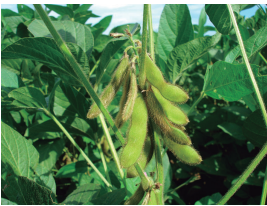
Soy plantation. (Source:Jcesar2015/pixabay.com (2022).
DEOXICOLIC ACID
Sodium deoxycholate is also known as “deoxycholic acid” and is naturally present in human bile, acting as a detergent for the emulsification of fats ingested in diets. Sodium deoxycholate has been used in medicine for years, insubcutaneous injections, for the reduction of localized fat in the jowls, abdomen, hips and thighs. This acid, due to its detergent action, induces the destruction of adipocyte membranes in a non-specific way (chemical lipolysis).
When administered subcutaneously, sodium deoxycholate promotes a decrease in adipocyte cell oxygen, leading to adipocyte vacuolation and a subsequent increase in membrane permeability; to the alteration of the PH of the medium; and acute inflammation within the septum and subcutaneous fat pads. The latter ultimately results in a rupture of the adipocyte walls and the direct breakdown of fat cells (fat necrosis). This facilitates the release of lipid content (fatty acids) stored inside the fat cell.
When used inappropriately and in high doses, deoxycholic acid can lead to the appearance of acute pancreatitis, apoptosis, edema and release of prostaglandins E2. Furthermore, if used intradermally instead of subcutaneously, painful nodules may occur that take 7 to 10 days to disappear.
L-CARNITINE
L-carnitine is normally found in the diet of animal and plant origin, with animal products being richer in L-carnitine than those of plant origin. L-carnitine is also synthesized in the body itself from two essential amino acids: L-lysine and L-methionine. Its biosynthesis occurs mainly in the liver and kidneys, from where it is released into the blood and transported to the skeletal and cardiac muscles.
L-carnitine is very important for energy metabolism. It is responsible for transporting long-chain fatty acids from the cytosol to the interior of the mitochondria, where it undergoes β-oxidation and produces ATP (cellular energy). Therefore, the rate of β-oxidation is determined by the activity of the L-carnitine-dependent fatty acid transport system. L-carnitine also participates in numerous other metabolic processes, such as carbohydrate metabolism, branched-chain amino acids and ketogenesis. This is essential in lipid metabolism as it allows cells to break down fat through the process of β-oxidation. The association of L-carnitine with other lipolytic agents is an excellent alternative for the treatment of localized fat.
L-ARGININE
L-arginine is an amino acid that acts to reduce localized fat by stimulating lipolysis and improving the metabolic profile with increased energy expenditure by the body.
L-arginine stimulates mitochondrial biogenesis, increasing the expression of cell signaling molecules (such as nitric oxide), as well as increasing the oxidation of energy substrates such as glucose and long-chain fatty acids. Furthermore, this substance also increases the secretion of growth hormone, which assists in fat burning and modulates the expression and function of enzymes that act on lipid metabolism in insulin-sensitive tissues, in addition to the antioxidant response. All this contributes to the increase of the lipolysis process and the reduction of localized adiposity.
CAFFEINE
Caffeine acts as an antagonist of adenosine receptors, generating a lipolytic action, with the release of fatty acids from adipocytes. Adipocytes have adenosine receptors, which are responsible for inhibiting lipolysis. Adenosine, when binding to its adenosine A1 receptor, mediates an anti-lipolytic action on adipocytes, inhibiting the adenylate cyclase (AC) pathway and the production of cyclic AMP (cAMP). Caffeine competes with adenosine for this receptor and, when binding to it, inhibits the phosphodiesterase enzyme, increasing cAMP production and epinephrine release, which consequently increases lipolysis.
TRISSILINOL – ORGANIC SILICON
In GLD, there is a decrease in microcirculation and a subsequent deficit of nutrients in the tissues; the interstitial matrix becomes denser and the collagen fibers become shorter and thicker. Silicon is an essential trace element that performs several functions in our body and is present in the structures of collagen, elastin, proteoglycans and glycoproteins, being of great importance for connective tissue. This substance stimulates the synthesis of elastic and collagen fibers, favoring their regeneration and reorganization, in addition to providing remodeling of the dermis, preventing the glycosylation of these fibers, which prevents skin sagging. Furthermore, silicon increases the enzyme hyalurane synthetase, which is responsible for the synthesis of hyaluronic acid, thus contributing to the hydration and firmness of the skin and to the general improvement of the skin texture.
Since silicon has an antioxidant action, it promotes non-enzymatic glycosylation and the normalization of cell mitosis in fibroblasts, preventing lipid peroxidation from disorganizing the connective tissue, causing stiffness therein. Therefore, silicon contributes to an anti- hardening action on the dermis. Organic silicon also performs a lipolytic action, by increasing the concentrations of cAMP within the adipocyte, which activates lipolysis and contributes to the reduction of localized fat.
CAFFEINE ALGINATE SILOXANETTRIOL (CAS)
Siloxanetriol is an active that associates pure caffeine and alginic acid to the silanol molecule. It acts as a lipolytic agent by promoting an increase in cAMP and by inhibiting the lipoprotein-lipase enzyme. By increasing cAMP, it induces the breakdown of triglycerides into fatty acids and glycerol and, by inhibiting the enzyme lipoprotein-lipase, it prevents the storage of triglycerides within adipocytes.
The lipolysis process, by increasing the local lipid content, leads to lipid peroxidation of the connective tissue, with disorganization of collagen and elastin fibers. The organic silicon molecule present in CAS contributes to the reorganization of these fibers and the improvement of the support tissue. The use of CAS is indicated in the treatment of GLD and localized fat.
YOHIMBINE
Yohimbine is a drug derived from the plant of the Pausinystalia johimbe species, found in West and Central Africa, which acts as a lipolytic and vasodilator. Yohimbine acts as a selective antagonist of alpha-2 adrenergic receptors located in fat cells, reducing their stimulation and allowing the action of beta-1-adrenergic receptors with lipolytic activity.
Yohimbine, by promoting the release of nitric oxide, has a peripheral vasodilator action on the skin, kidneys, intestines and genital area. It is contraindicated in patients with a history of cardiac, renal or hepatic disease, arterial hypertension and in patients with psychiatric disorders or severe endogenous depression.
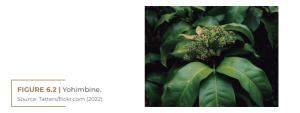
TIRATRICOL (TRIAC®)
Tiratricol (Triac®) is a 3,5,3′ triiodotyroacetic acid metabolic derivative of triiodothyronine with lipid action. It acts by inhibiting phosphodies terase within adipocytes, producing cyclic monophosphate adenosine (cAMP) and hydrolyzing triglycerides into free fatty acids and glycerol. Furthermore, this acid also activates β-adrenergic receptors, inducing lipolysis and reducing the size of fat cells.
TRIPEPTIDE-41
Tripeptide-41 is a peptide derived from the transforming growth factor β of amino acids, which acts through cellular communication, stimulating the synthesis of messenger molecules with lipolytic action.Tripeptide-41 acts in four steps:
• it stimulates the production of important cytokines in lipolysis;
• it increases cAMP within adipocytes, facilitating their emptying;
• it releases substances that reduce the entry of fatty acids into fat cells, including fatty acids from the diet that would form reserve fat;
• it decreases the hypertrophy of fat cells.
BENZOPYRON
Benzopyrone is a generic name that groups together several substances (coumarins, troxerutin, diosmin, rutosides) and that are characterized by their lymphokinetic action in different types of lymphedema and lymphostatic conditions. The mechanism of action of benzopyrone is to increase the activity of tissue macrophages, which, once activated, have proteolytic activity, removing proteins from the interstitium and decreasing its osmotic pressure in relation to the capillaries, thus promoting the passage of water to the the capillaries, with a reduction in edema and local inflammation. By improving tissue exchange and stimulating proteolytic activity, benzopyrone also acts to minimize the formation of fibrosis.
This compound, therefore, increases vascular and lymphatic flow, decreases capillary permeability and the amount of fluid formed in the subcutaneous tissue. In addition, it also stimulates lymphocyte cell receptors and lymph node contraction, favoring the lymphatic drainage process and thus restoring microcirculation in the adipose tissue.
Benzopyrone is indicated for the treatment of GLD associated with venolytic insufficiency. Its use is contraindicated in patients with hypersensitivity to coumarin or in patients with severe liver disease.
PENTOXIFYLLINE
Pentoxifylline is a methylxanthine derivative with lipolytic, vasodilator action and considered an immunomodulator for inhibiting tumor necrosis factor. It acts as a lipolytic by inhibiting phosphodiesterase and stimulating the hydrolysis of reserve triglycerides, increasing cAMP levels, which results in the activation of hormone-sensitive lipase (HSL) and the breakdown of stored fat (lipolysis). In addition, pentoxifylline stimulates tissue microcirculation, favoring the elimination of metabolic waste and reducing edema.
CRISINA
Chrysin is a flavonoid present in passiflora caerulea with the ability to inhibit the aromatase enzyme, which converts testosterone into estrogen or dihydrotestosterone (DHT).
It is therefore considered an “anabolic isoflavone” due to its antiestrogen effect. As GLD is associated with the influence of estrogenic hormones on localized fat, chrysin contributes to its treatment. This substance, due to its antiandrogenic action, reduces adipose tissue at the site of its action, improves the inflammatory process, enhances venous return, reducing lipedema, and improves the general appearance of the skin.
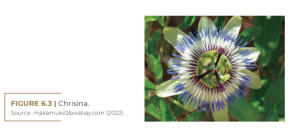
ARTICHOKE
Artichoke is a herbal medicine composed of 2% diphenolic derivatives (caffeic acid, cynarin); 1% of flavonoids (luteolin glycosides, rhamnoglycosides), among other components. It has an indirect effect on lipolysis by inhibiting phosphodiesterase and synthesis of the coenzymes NAD-NA- DH2 and NAD-NADPH2, in addition to having a diuretic action, favoring lymphatic drainage.

ARTICHOKE (Source: djedj/pixabay.com (2022).
GINKGO BILOBA
Ginkgo biloba is a herbal medicine derived from a Chinese plant rich in flavonoids (such as quercetin) and terpenoids with anti-inflammatory, antioxidant and stimulant action on arterial, cerebral and peripheral blood flow.
Ginkgo biloba inhibits platelet activating factor, decreases platelet aggregation and acts as a vasomodulator. In 2012, the National Health Surveillance Agency (ANVISA), thoughy Resolution No. 4,302, prohibited the use of some plant extracts isolated or associated with other substances, such as ginkgo biloba and others (green tea; Centella asiatica, melilotus; horse chestnut; dandelion; sinestrol; ayslim; and sunflower) in mesotherapy.
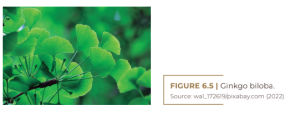
VITAMINS
• Vitamin A: regulates skin cell renewal and keratinization, in addition to repairing keratinocytes.
• Vitamin C: acts as a cofactor for two enzymes that are essential in collagen biosynthesis: lysyl hydroxylase and prolyl hydroxylase. This vitamin contributes to the production of dermal fibroblasts and the synthesis of collagen I and III in the skin, improving sagging; inhibiting melanin production, which reduces hyperpigmentation; and has antioxidant action, neutralizing the effects of free radicals generated in newly oxygenated tissue.
• Vitamin E: antioxidant action.
• Vitamin K: acts on the coagulation mechanisms and therefore regulates the microcirculation of the skin.
HYALURONIDASE AND COLLAGENASE
Hyaluronidase and collagenase act in the breakdown of connective tissue. They fragment the bands of fibrous tissue formed between the lobes of fat in cellulite.
COLLAGENASE CLOSTRIDIUM HISTOLYTICUM-AAES (CCH)
An article was published by Kaufman-Janette et al. in Dermatologic Surgery in 2021, evaluating Clostridium histolyticum-aaes (CCH) collagenase in treatments for moderate to severe cellulite in the glutes of adult women.
The work was carried out using two phase 3, double-blind, randomized studies of identical designs. They showed significant improvements in cellulite and an overall lower visual and emotional impact of post-treatment cellulite compared to placebo-treated women. The use of CCH for this purpose was approved in the United States in July 2020.
Clostridium histolyticum-aaes collagenase (CCH; QWO, Endo Aesthetics LLC, Malvern, PA) for injection comprises 2 purified bacterial collagenases (AUX-I and AUX-II [class I and II clostridial collagenases]), which hydrolyze type I and III collagen, resulting in disruption of target collagen structures. Several studies show the effectiveness of subcision in breaking the fibrous septa of cellulite. CCH acts by enzymatically breaking these septa. In this study, three treatment sessions of subcutaneous HCC 0.85mg or placebo per treatment were recommended, with an interval of 21 days between sessions. The injections were given directly into the depressions (dimples) of the cellulite. Most of the adverse effects observed in the group that received CCH were related to the region where the injection was applied, with reports of bruising and local pain. All women in both studies were seropositive for AUX-I and AUX-II binding antibodies, but this showed no long-term effect on clinical response or the frequency of adverse events. Thus, the study by Kaufman-Janette et al. showed that CCH is a safe and effective treatment for women with moderate to severe glute cellulite.
PROCAINE
Procaine has anesthetic and analgesic action and acts on smooth muscle fibers, producing peripheral and local vasodilation, contributing to improved circulation. According to Pistor, this substance can be used as a “vehicle for other actives” in mesotherapy. However, in the treatment of GLD, its use is avoided, in order to keep the actives longer at the application site.
There is no standard blend to be used in mesotherapy in any type of treatment. The association of actives in a mixture must take into account the patient’s need; the degree of cellulite (the number of cellulite foci [depressions/dimples] and their depth); if there is associated sagging and, if applicable, the degree of sagging; the presence or absence of lipedema or other pathologies that occur with poor circulation; the patient’s Body Mass Index (BMI); presence or absence of localized fat; presence of poor secondary healing (such as, for instance, poor healing after an injection, after an accident, after liposuction or after any other type of surgery) and whether the patient concomitantly undergoes any hormonal treatment.
Here are some suggestions for blends:
For grade I and grade II cellulite:
• Pentoxifylline 40mg/2ml – 1 vial
• Trisilinol (organic silicon) 10mg 2ml – 1 vial
• Benzopyrone 1mg/2ml – 1 vial
• SAC (caffeine siloxanetriol alginate) 20mg/2ml – 1 vial
• Lidocaine 2%/1ml – 1 vial
For grade III and grade IV cellulite:
• Tripeptide-41 1.2%/2ml – 1 vial
• Pentoxifylline 40mg/2ml – 1 vial
• L-arginine 20% + Lidocaine 1%/2ml – 1 vial
• Trisilinol (organic silicon) 10mg/2ml – 1 vial
For grade III and grade IV cellulite, with water retention:
• Pentoxifylline 40mg/2ml – 1 vial
• Chrysin 100mcg/2ml – 1 vial
• Benzopyrone 0.5%/2ml – 1 vial
• Tripeptide 41 1.2%/2ml – 1 vial
• Lidocaine 2%/1ml – 1 vial
For localized fat and cellulite:
• L-arginine 20% + Lidocaine 1% 2ml – 1 vial
• L-carnitine 600 mg/2ml – 1 vial
• SAC (caffeine siloxanetriol alginate) 20mg/2ml – 1 vial
• Tripeptide-41 1.2% 2ml – 1 vial
For localized fat of the gynoid type:
• Yohimbine 5mg/1ml – 1 vial
• L-carnitine 600mg/2ml – 1 vial
• Benzoic Caffeine 100mg/2ml – 1 vial
• Benzopyrone 0.5%/2ml – 1 vial
• Lidocaine 2%/1ml – 1 vial
REFERENCES
Aplicação ou injeção para tratamento da gordura localizada com Kybella, ATX 101, Ácido Deoxicólico. https://injectors.com.br/kybella-acido-deoxicolico/
Benzopirona – https://br.prvademecum.com/ Bertolini GL. Carnitina – Metabolismo, funções e potencial terapêutico. Revista Uningá, n. 1, p. 15-34, jan./jun.2004. Bremer J. Carnitine — Metabolism and functions. Physiol. Rev., n. 63, 1420-80, 1983. Dias, PCP. A importância do silício orgânico para a produção de colágeno. Monografia, FUNORTE, 2015.
Geremia K, Fontanive T. Mascarenhas M. O efeito do desoxicolato de sódio no tratamento da gordura localizada: estudo de revisão. Ciência em Movimento | Reabilitação e Saúde | n. 38 | vol. 19 | 2017.
Hexsel DM. et al. Cosmetic uses of injectable phosphatidylcholine on the face. Otolaryngologic Clinics of North
America, v. 38, n. 5, p. 1119-1129, 2005. Hoult JRS, Payá M. Pharmacological and biochemical actions of simple coumarins: natural products with therapeutic potential. General Pharmacology: The Vascular System, v.27, n.4, 1996. https://prescritor.essentia.com.br/injetaveis-essentia-terapias-esteticas/
Jana K. et al. Chrysin, a natural flavonoid enhances steroidogenesis and steroidogenic acute regulatory proteingene expression in mouse Leyding cells. Journal of Endo- crinology, v.197, 2008.
Kaufman-Janette J, Joseph JH, Kaminer MS, Clark J, Fabi SG,GOld MH, Goldman MP, Katz BE, Peddy K, Schlessinger J, Yong L, Davis M, Hurley D, Liu G, McLane MP, Vijayan S, Bass LS. Colagenase Clostridium Histolyticumaaes for the Treatment of Cellulite in Women: Results From Two Phase 3 Randomized, Placebo-Controlled Trials. Dermatol Surg. 2021 May; 47 (5): 649-656. Published online 2021 Apr 7. Doi: 10.1097/DSS.0000000000002952. Kede MPV, Sabatovich O. Dermatologia Estética. Editora Atheneu, São Paulo: 337-358, 2003. Konda D, Thappa DM. Mesotherapy: What is new? Indian
Journal of Dermatology, Venereology, and Leprology | January-February 2013 | Vol 79 | Issue 1.
Leibaschoff G. Mesotherapy and Cellulite. American Journal of Mesotherapy 2017.
Leibaschoff GH. Cellulite (Liposclerosis): Etiology and Treatment. The American Journal of Cosmetic Surgery Vol. 14, No.4, 1997. https://doi.org/10.1177/074880689701400404
Leibovitz B, Mueller J. Carnitine. J. Optimal Nutr., n. 2, 90- 109, 1993. Literatura: benzopirona + rutina – https://www.victalab.
com.br/Mello PB, Schulz J, Piccinini AM, Da Rosa LHT, Da Rosa PV. Tratamento da gordura ginóide através de fonoforese com tiratricol. Fisioterapia Brasil, v.11, n.1, 2010.
O que é Crisina: para que serve e como tomar. https://www.oficinadeervas.com.br/Rotunda AM, Avram MM, Avra AS. Cellulite: Is there a role for injectables? Journal of Cosmetic and Laser Therapy. 2005; 7: 147-154.
Rotunda AM, Suzuki H, Moy RL, Kolodney MS. Detergent effects of sodium deoxycholate are a major feature of an injectable phosphatidylcholine formulation
used for localized fat dissolution. Dermatol Surg. 2004 Jul;30(7):1001-8.
Salti G, Ghersetich I, Tantussi F, Bovani B, Lotti T. 5.Phosphatidylcholine and sodium deoxycholate in the treatment of
localized fat: a double-blind, randomized study. Dermatol Surg. 2008 Jan;34(1):60-6; discussion 66. Epub 2007 Dec. Sitrângulo Junior CJ. Troxerutincoumarin efficacy in the treatment of varicose veins of the lower limbs. Revista
Brasileira de Medicina, v.68, n.5, 2011. Sivagnanam G. Mesotherapy – The french connection. J Pharmacol Farmacêutico. 2010 janeiro-junho; 1(1): 4–8. doi: 10.4103/0976-500X.64529
Sylwia M, Krzysztof MR. Efficacy of intradermal mesother- apy in cellulite reduction — conventional and high fre- quency ultrasound monitoring results. Journal of Cosmet- ic and Laser Therapy. ISSN: 1476-4172 (Print) 1476-4180. http://www.tandfonline.com/loi/ijcl20
Ta N, Walle T. Aromatase inhibition by bioavailable methylated flavones. The Journal of Steroid Biochemistry and Molecular Biology, v.107, 2007. Tan B, Li X, Yin Y, Wu Z, Liu C, Tekwe C, Wu G. Regulatory roles for L-arginine in reducing white adipose tissue.
Frontiers in Bioscience-Landmark 17, 2237-2246, June 1,2012. Doi: 10.2741/4047.
Velasco MVR, Tano CTN, Machado-Santinelli GM, Consiglieri VO, Kaneko TM, Baby AR Effects of caffeine and siloxanetriol alginate caffeine, as anticellulite agents, on fatty tissue: histological evaluation. Journal of Cosmetic Dermatology, 7, 23–29- 2008. https://doi. org/10.1111/j.1473-2165.2008.00357.x
